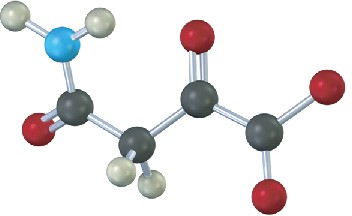29.9 Catabolism of Proteins: Deamination
The catabolism of proteins is much more complex than that of fats and carbohydrates because each of the 20 α-amino acids is degraded through its own unique pathway. The general idea, however, is that (1) the α amino group is first removed as ammonia by a deamination process, (2) the ammonia is converted into urea, and (3) the remaining amino acid carbon skeleton (usually an α-keto acid) is converted into a compound that enters the citric acid cycle.
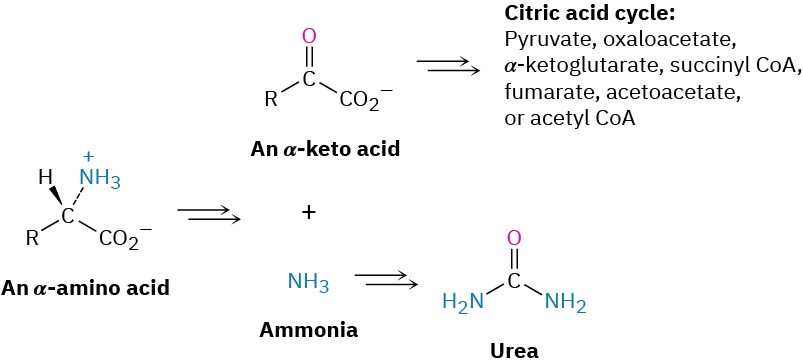
Transamination
Deamination is usually accomplished by a transamination reaction in which the –NH2 group of the amino acid is exchanged with the keto group of α-ketoglutarate, forming a new α-keto acid plus glutamate. The overall process occurs in two parts, is catalyzed by aminotransferases, and involves participation of the coenzyme pyridoxal phosphate, abbreviated PLP, a derivative of pyridoxine (vitamin B6). The aminotransferases differ in their specificity for amino acids, but the mechanism remains the same.
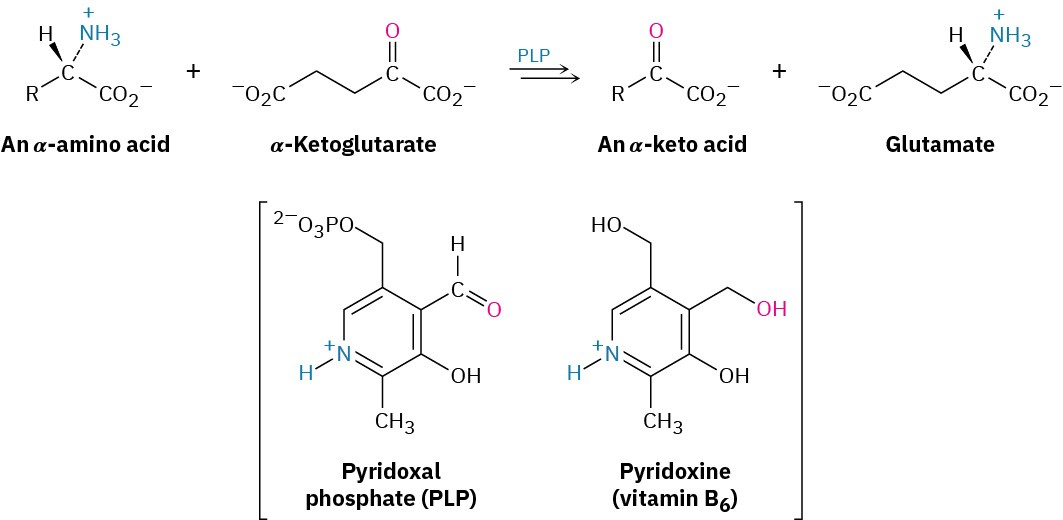
The mechanism of the first part of transamination is shown in Figure 29.17. The process begins with reaction between the α-amino acid and pyridoxal phosphate, which is
covalently bonded to the aminotransferase by an imine linkage between the side-chain – NH2 group of a lysine residue in the enzyme and the PLP aldehyde group.
Deprotonation/reprotonation of the PLP–amino acid imine effects tautomerization of the imine C═N bond, and hydrolysis of the tautomerized imine gives an α-keto acid plus pyridoxamine phosphate (PMP).
Figure 29.17 MECHANISM
Mechanism for the enzyme-catalyzed, PLP-dependent transamination of an α-amino acid to give an α-keto acid. Individual steps are explained in the text.
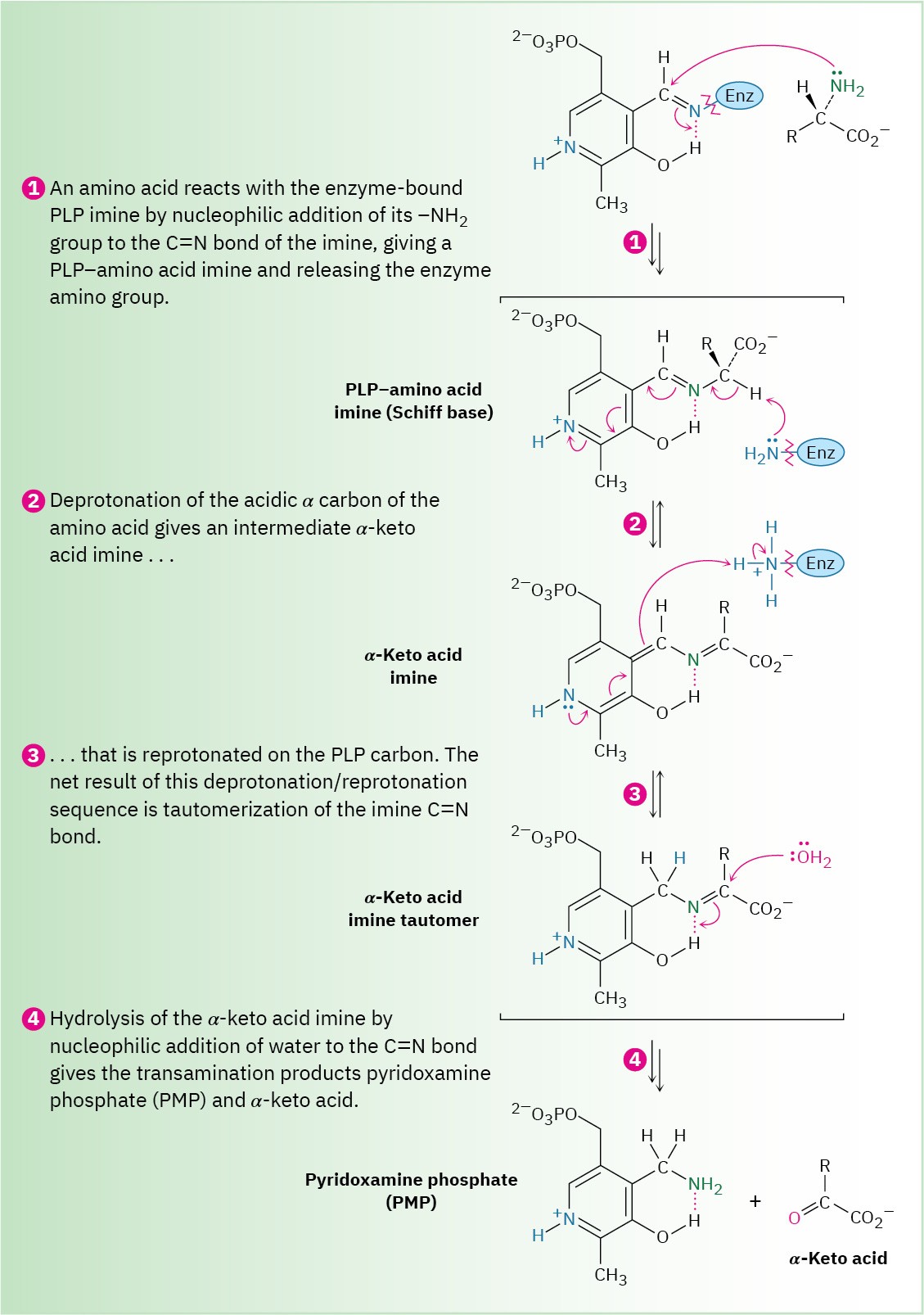
Step 1 of Figure 29.17: Transimination
The first step in transamination is transimination—the reaction of the PLP–enzyme imine with an α-amino acid to give a PLP–amino acid imine plus expelled enzyme as the leaving
group. The reaction occurs by nucleophilic addition of the amino acid –NH2 group to the C═N bond of the PLP imine, much as an amine adds to the C═O bond of a ketone or aldehyde in a nucleophilic addition reaction (Section 19.8). The protonated diamine intermediate undergoes a proton transfer and expels the lysine amino group in the enzyme to complete the step.
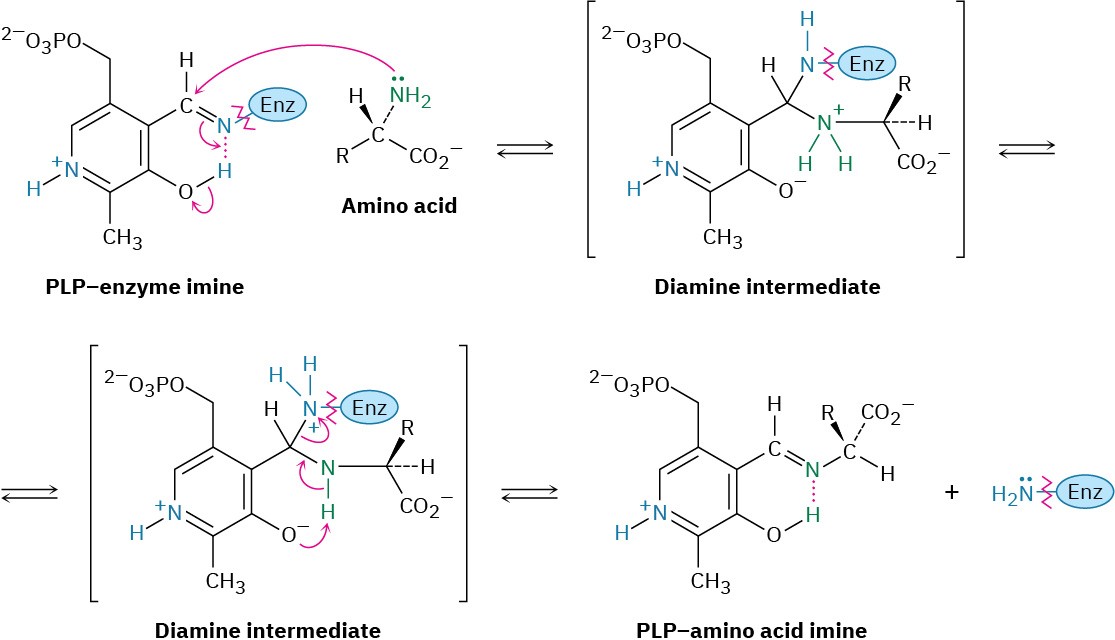
Steps 2–4 of Figure 29.17: Tautomerization and Hydrolysis
Following formation of the PLP–amino acid imine in step 1, a tautomerization of the C═N bond occurs in step 2. The basic lysine residue in the enzyme that was expelled as a leaving group during transimination deprotonates the acidic α position of the amino acid, with the protonated pyridine ring of PLP acting as the electron acceptor. Reprotonation occurs on the carbon atom next to the ring, generating a tautomeric product that is the imine of an α– keto acid with pyridoxamine phosphate, abbreviated PMP.
Hydrolysis of this PMP–α-keto acid imine then completes the first part of the transamination reaction. This is the mechanistic reverse of imine formation and occurs by nucleophilic addition of water to the imine, followed by proton transfer and expulsion of PMP as leaving group.
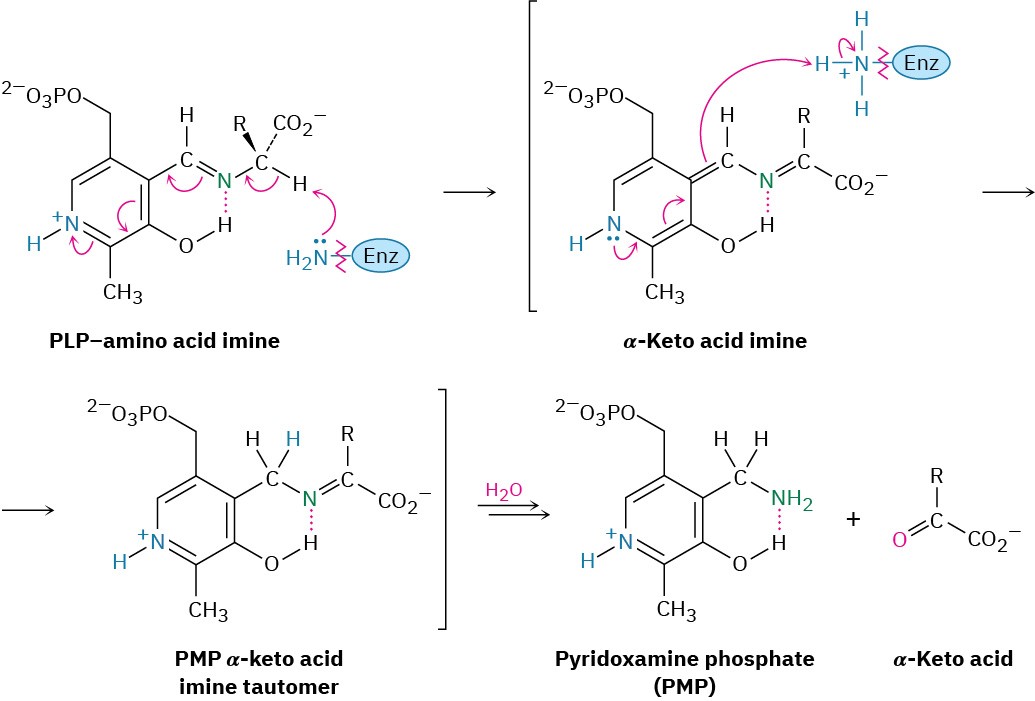
Regeneration of PLP from PMP
With PLP plus the α-amino acid now converted into PMP plus an α-keto acid, PMP must be transformed back into PLP to complete the catalytic cycle. The conversion occurs by another transamination reaction, this one between PMP and an α-keto acid, usually α– ketoglutarate. The products are PLP plus glutamate, and the mechanism is the exact reverse of that shown in Figure 29.17. That is, PMP and α-ketoglutarate give an imine; the PMP–α-ketoglutarate imine undergoes tautomerization of the C═N bond to give a PLP– glutamate imine; and the PLP–glutamate imine reacts with a lysine residue on the enzyme in a transimination process to yield PLP–enzyme imine plus glutamate.

Problem 29-14
Write all the steps in the transamination reaction of PMP with α-ketoglutarate plus a lysine residue in the enzyme to give the PLP–enzyme imine plus glutamate.
Problem 29-15
What α-keto acid is formed on transamination of leucine? Problem 29-16
From what amino acid is the following α-keto acid derived?
